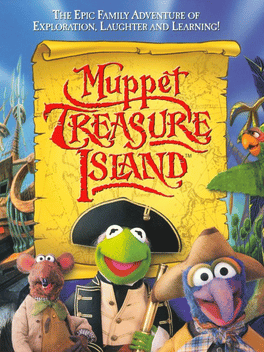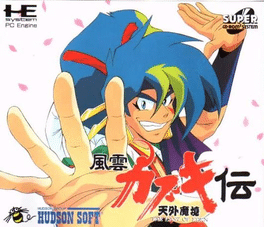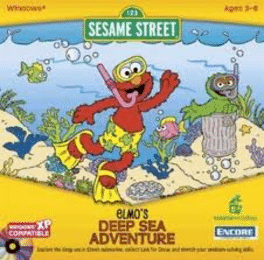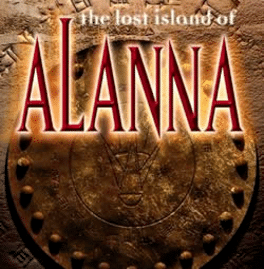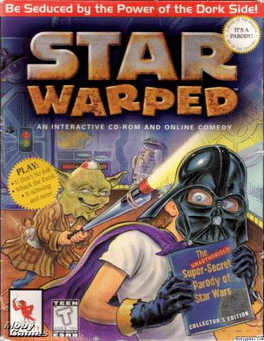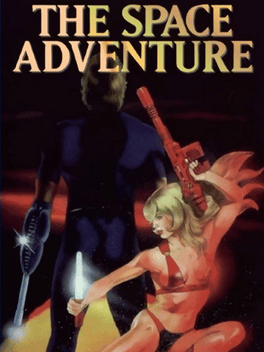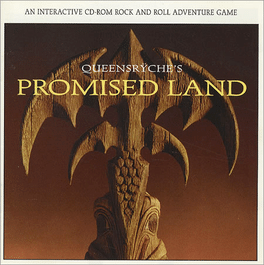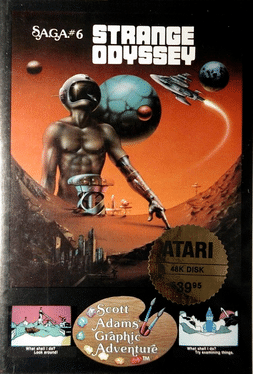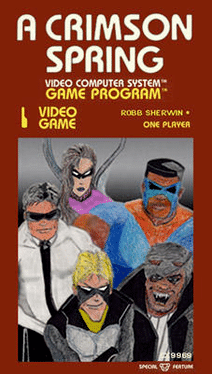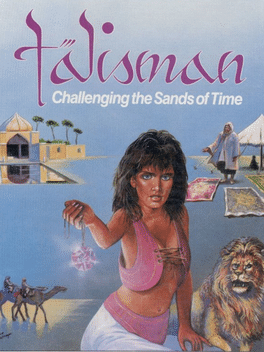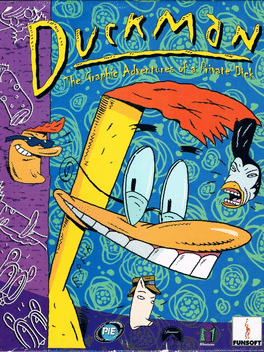Most Popular Adventure Games - Page 589
-
Muppet Treasure Island
1996
Muppet Treasure Island was a point-and-click adventure based on the film of the same name, based on the R.L. Stevenson novel. Which didn't have Muppets in it. -
Tengai Makyou: Fuun Kabuki-den
1993
A direct spin-off to Tengai Makyou II: Manjimaru staring Kabuki Danjirou. -
Lunacy
1996
Lunacy
1996
Lunacy, released in Europe as Torico and in Japan as Gekka Mugentan Torico (月花霧幻譚 Torico), is an adventure game developed by System Sacom and published by Sega for the Sega Saturn in 1996. Lunacy is an interactive movie adventure consisting of a long series of interconnecting full motion video (FMV) sequences, much like The 7th Guest and System Sacom's earlier Saturn game, Mansion of Hidden Souls. -
Star Warped
1997
-
The Space Adventure
1991
The Space Adventure
1991
While waiting in a bar for his partner, Cobra encounters a beautiful bounty hunter named Jane. Very soon he realizes that the bounty Jane has been hunting for is his own head, for which the Galaxy Patrol has put quite a reward. But everything changes when Crystal Boy, the head of the Pirate Guild and Cobra's archenemy, appears on the scene. Jane's father had apparently hidden a great treasure, encoding its location in tattoos on the backs of his triplet daughters. Crystal Boy wants this treasure, and is going after Jane and her sisters. Cobra and Jane decide to join forces in order to find Jane's sisters and to undermine Crystal Boy's plans. -
Queensrÿche's Promised Land
Queensrÿche's Promised Land is an adventure game for the PC and Mac. -
Scott Adams' Graphic Adventure #6: Strange Odyssey
1982
Graphical version of the original Scott Adams all-text adventure, Strange Odyssey. -
A Crimson Spring
2000
A Crimson Spring
2000
A Crimson Spring is interactive fiction in the classic style of Infocom. Using an advanced parser, the player controls the lead character through several different scenes within the super-hero genre. The player controls the actions and moral code of one such hero -- the Holy Avenger -- as he attempts to investigate the murder of his lover and partner. -
Talisman: Challenging the Sands of Time
Talisman: Challenging the Sands of Time is a text adventure set in the Persian Empire where players, saved from execution by King Darius, must defeat a destructive genie to earn their freedom. The game features full-sentence parsing and graphical elements, following the protagonist and their companion Abu the vizier on their quest. Players navigate the world using natural language commands while managing resources provided by the king. The physical release includes themed items like an "Arabian Express" credit card and a fictional market advertisement featuring flying carpets. -
Mountains of Ket
1983
Mountains of Ket
1983
You are accused of murder and the only way to wash your name clear is going east - to from where Vran Verusbel and his daughter Delphina are attacking your domain. -
Duckman: The Graphic Adventures of a Private Dick
1997
The ace detective is now an out-of-luck duck. Duckman, famed private dick and wise-cracking hero has just discovered his show is gone and so is his family. What fowl work is this? Scour the seamy underbelly of a city that doesn't care, in more than 80 different scenes in 40 locations. Explore a zany, anything-can-happen world filled with humorous creatures, deadly traps, and more than 10,000 frames of animation. Features: -The jokes and the bullets keep flying as Duckman runs amok with Cornfed, Bernice, Ajax, and the whole cast of wacky characters. -Voices from original cast members including Tim Curry, Nancy Travis, Dweezil Zappa, and Gregg Berger. -35 fully interactive characters waiting to clue you in or take you down. -Solve killer puzzles (emphasis on kill), face deadly traps (emphasis on dead), in this comic send-up of detective stories and all-American family values.

